The Greyhound is one of the most unique, sensitive, and ancient breeds. These dogs are athletes through and through, built with extraordinarily fine bones meant for speed. However, they also can also make great companions. Their sensitive personality is ideal for owners that want to cuddle. Read on to learn more about the Greyhound.
Description of the Greyhound
Slight and sleek, with very short hair, the Greyhound seems quite fragile. However, these are surprisingly sturdy dogs that weigh more than they look like they should. They can hold up to extremely taxing races like champions.
Of course, they are athletic, with a sprinter’s build. Their curved backs merge into a tail that often sticks between their legs. The Greyhound is a mix between high strung and sensitive. This breed may quickly switch from a high stepping prance to a slinky crawl.
These are ancient dogs, first bred in Egypt, where they belonged to Pharaohs and have a strong connection with aristocracy. In their early days, they were bred to hunt desert creatures, and were later perfected for racing.
Their short, smooth coat is soft to the touch, and offers little protection from the elements. Greyhounds come in many different colors. Blue, white and red, black, brindle, and white are just some of the tones on offer.
Life Expectancy and Size
Unfortunately, the Greyhound doesn’t have the longest life expectancy. They generally live between 10 and 13 years, not such an unusual age for larger dogs. These dogs are slender. They stand 27 to 30 inches tall, and weigh 60 to 70 pounds.
The Greyhound’s ribs should not be visible, but palpable, and they should show at least a light outline of the hipbone. It may be difficult to maintain some individuals’ weights. Greyhounds need marginally more protein than other breeds. Ask your veterinarian about any questions you may have.
Protective Ability
This breed is not a good choice of guard dog. The Greyhound is often timid with strangers, or at least reserved. Usually, they don’t even bark! Choose this dog for their sweet nature or athletic prowess, not their protective abilities.
Training
The Greyhound is sensitive and should be treated as such. They behave best when a consistent, rewards-based training plan is initiated. These dogs tend to need a lot of praise and will crumble if yelled at or roughhoused.
They are also a type of sighthound. Instead of tracking prey by scent, Greyhounds do so visually. This means that this breed is particularly prone to distraction. Keep training sessions short and interesting for the best chances of success. There’s no reason to set your dog up for failure by asking him to keep his attention on you for unreasonable amounts of time.
Energy Level
Greyhounds are born to race, and today they still retain much of their athleticism.
They are active dogs, but also immensely enjoy cuddling and curling up on cozy couches. These dogs will calm right down if they are given the chance to stretch their legs. Greyhounds often switch quickly between moods. They may go from snoozing on your lap to racing around the house in a matter of seconds.
What Living with a Greyhound is Like
Most Greyhounds that end up as family pets were previously racers. Many dogs find themselves without a job or a home after they stop performing well. Rescues perform a crucial role, socializing these dogs for family life. Most individuals grew up living in kennels with little human interaction.
Because of this, some Greyhounds get a bad rap as being skittish and difficult to socialize. It is true that rescuing a dog can be risky, but many families find joy in giving these ex-athletes a new purpose in life. With time and patience, they can make loving companions.
These dogs crave human attention and do not like to be left alone for too long. Separation anxiety is common. They also may stress out if they have to face rapid or frequent changes in schedule.
Care of the Greyhound
These dogs are easy to care for. The most important prerequisite to owning a Greyhound is being able to commit to their sensitive personalities.
Environmental Needs
The Greyhound will not hold up well in cold weather. Their low body fat and short hair do not give them much protection. Take proper precautions to keep them warm during the winter. They are probably not suited to environments that become frigid or are cold all year round.
Exercise Needs
Regular play sessions in a fenced area are usually sufficient to exercise these dogs. It needs to be large enough, though, so they can properly stretch their legs. After short (but fast!) runs, most Greyhounds are content to laze around. Generally, Greyhounds do not do very well off leash, because they are quickly distracted and love to chase fast-retreating objects (like squirrels, cars, or bikes).
This breed does not have much endurance, so they are not ideal companions for owners that want to jog or bike.
Shedding and Grooming
This breed has an easy-care coat. They only need sporadic, gentle brushing. Usually, this will work just as well as a bath to get off any dirt they may have gotten into. Their short coat sheds, but not much.
Ideal Home Environment
The ideal owner will make sure to remain gentle with this sensitive breed. This requires patience and positivity during training and daily life in general. These athletes don’t have the inner fire of a terrier or the self-assuredness of a working dog.
The Greyhound should have access to a safe place to run around. Remember, they also like to cuddle!
Health Concerns
These dogs have some eye and heart problems, especially later in life. They also are at risk for Greyhound Neuropathy, a neurological problem that is unique to the breed.
Like many large dogs, Greyhounds are susceptible to bloat. This is a life threatening stomach disorder. Feed small meals and avoid vigorous exercise after mealtime.
Behavior Problems
Remember that these are racing dogs and hunters. If unsupervised, they may dash off into trouble. It is important to socialize this breed early with other dogs and small animals. They have a very strong prey drive. Separation anxiety, especially in retired racers, is common. Prevent this by making alone time fun and easy for dogs, and treat these issues with the help of a dog behavior consultant.
Some owners also report difficulty housebreaking the breed. As they are sensitive to cold and inclement weather, it can be helpful to provide a sheltered outdoor area.


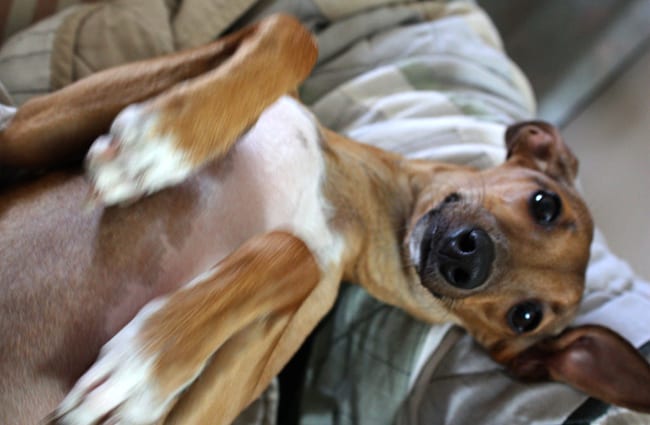
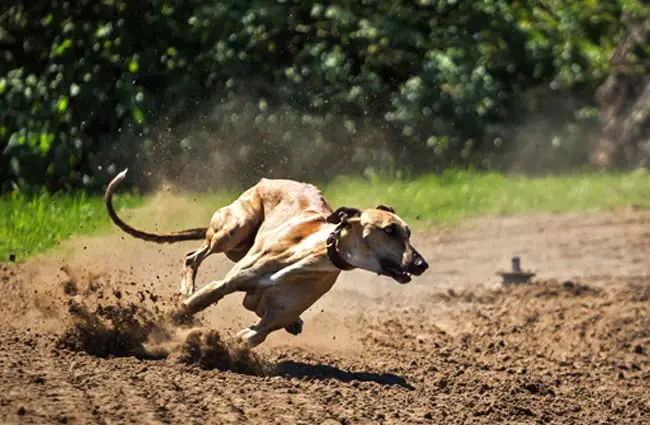
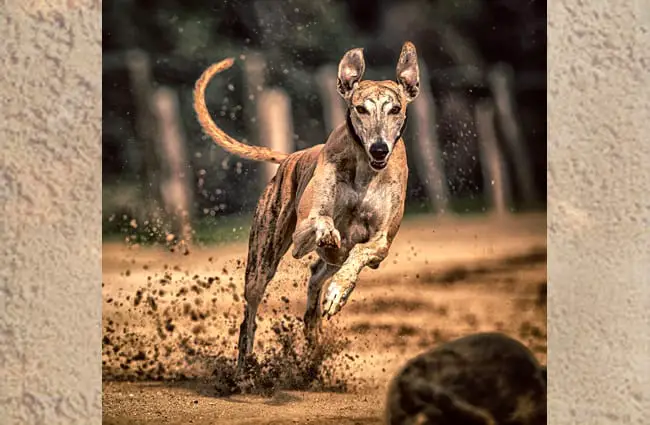
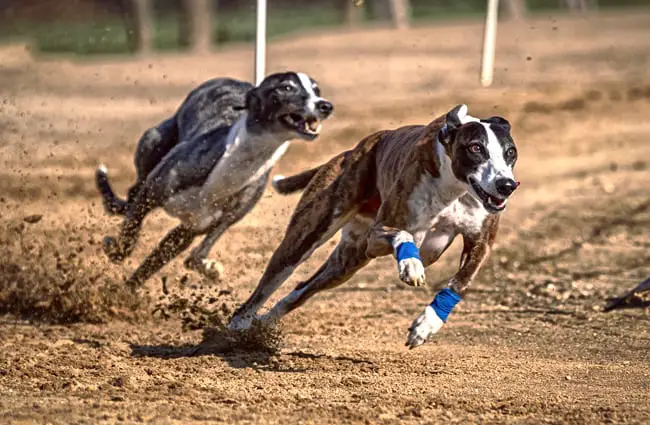
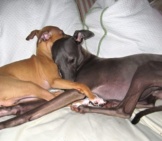
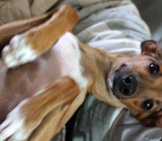
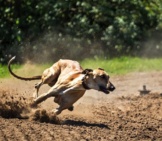
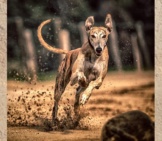
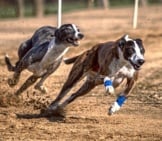





![Red Angus Closeup of a beautiful Red Angus cowPhoto by: U.S. Department of Agriculture [pubic domain]https://creativecommons.org/licenses/by/2.0/](https://animals.net/wp-content/uploads/2020/03/Red-Angus-4-100x75.jpg)

